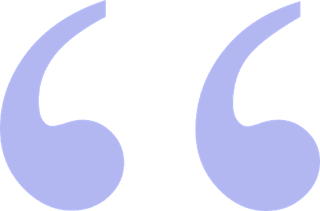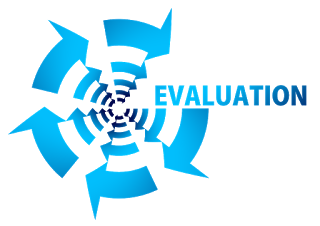Pearl Zhu's Blog, page 1300
September 4, 2016
The New Book “Digitizing Boardroom” Quotes Collection III
 56 The purpose of the governing body, or board of directors, is to direct and guide the organization in the right direction.
56 The purpose of the governing body, or board of directors, is to direct and guide the organization in the right direction.
57 It is what the “I” stands for - Information, Innovation, Insight, Improvement, or Influence, that needs to be represented by CIOs in the Boardroom.
58 Digital transformation represents a break with the past, having a high level of impact and complexity.
59 Governance is not about maximization, but about optimization.
60 Good governance is less about structure and rules than being focused, effective and accountable.
61 Metaphorically, governance is like a “Steer,” Risk Management is like a “Brake.”
62 A steer may not accelerate the speed of vehicle directly; by navigating the better path, it can shorten the distance or save the energy to reach the right destination.
63 Generally speaking, the key dimensions of corporate governance are strategy oversight, policy making, accountability, and monitoring.
64 The quality strategy is about making the right decision at the right time which requires quality information.
65 GRC is about collaboration and harmony.
66 IT Governance is like a steer, to ensure IT running with the right speed smoothly; not like a break to stop it and stifle innovations and performance.
67 Sense and deal with problems in their smallest state, before they grow bigger and become fatal.
68 The digital Board will help set the principles to innovate talent management and embrace digital fitness.
69 The Board must set a tone for digital leadership.
70 Human Capital is one of the constituents of Intangible Capitals.
71 All generations need to realize that they can learn from each other, to run a successful business and an advanced society.
72 It’s important to find an adequate way of assessing the “creative workplace,” appropriately.
73 There is a digital way to identify talent -hiring character, raw intelligence, growth mind and recombinant capability.
74 The raw talent is precious, and the well-crafted talent is a good combination of “Will Power + Brain Power + Knowledge Power.”
75 The BoDs and business leaders must work with the right mindset to make good policies and create an inclusive organization with every dip in the business lifecycle.
76 Talent risk is a strategic risk of modern businesses.
77 Being digital-ready is an overarching approach via building a set of “digital -flavored” cultures and taking a series of stepwise practices.
78 The Boardroom Paradox: Harden the softest like culture, and soften the hardest like number.
79 Independent directors practice independent thinking.
80 Corporate brand, culture, knowledge, and risk management are all boardroom concerns.

81 The cultural transformation can not be mandated, it must evolve.
82 Positive, empowered teams self-manage themselves.
83 An organization with an authentic culture can inspire openness, innovation, and motivation.
84 Changing the culture is the mindset. It is the employee’s mindset or behavior that expresses “culture.”
85 One of the formulas to build a successful business is to nurture an “adaptability trait” in an organization’s culture.
86 The digital-savvy Board has to gain digital awareness, shape digital mindset, provide the outlier’s view, and master of digital fluency.
Follow us at: @Pearl_Zhu
Published on September 04, 2016 22:43
IT Management Dashboard
 The dashboard is an effective method to show IT value,The dashboard is also a good tool to provide input to the decision maker such as IT leaders and managers. Further, it encourages the IT departments to create their own marketing plan for dealing with their different 'customers inside and outside of the organization.
The dashboard is an effective method to show IT value,The dashboard is also a good tool to provide input to the decision maker such as IT leaders and managers. Further, it encourages the IT departments to create their own marketing plan for dealing with their different 'customers inside and outside of the organization.
IT dashboard helps to create a degree of abstractness in presentations: It enables executives have their say in a meeting or make an effective decision. Essential information in a management dashboard usually includes:1) Well selected Metrics and performance data2) IT Departmental P & L3) Employee Turnover/ Attrition percentage4) Key challenges and relevant data5) Top accomplishments for strategy execution 6) Any deviations in schedule cost with reasons7) Observed business benefits/outcomes8) Key risks and critical issues with mitigation steps9) Any important decision that needs to be taken including budgetary approvals, approvals for schedule extension, approvals for additional resources, etc.
IT value to the business can be categorized in a number of ways: A dashboard is a tool to visualize Key Performance Indicators and as such it certainly a must to show the metrics of the values and the effectiveness of the measured department -IT, or the measured activity produces. -A: Improving Speed/Agility (Speed to Market, ability to change etc)-B: Improving Revenue (enable the business to gain market share) -C: Customer Acquisition/Retention (optimize end customer experience...) -D: Lowering Risk (reduces business system downtime, create business continuity) -E: Lowering Cost (reduces the cost of the current business process, improve margins, freeing up capital for new ventures, etc).
 There are at least three target audiences who are interested in IT value presentation: IT staff, IT management, and business leadership. Each has a different focus. It is a very good idea to make IT metrics transparent to the varying departments - to visualize the progress and also to evaluate if the KPIs being used are the same as the ones they use to describe IT activity. Also, make sure to involve the key stakeholders in the development of the scorecard they will be presented, and strive to minimize the overall number of metrics to share the logical process flow. The intuitive visualization is also important factors in make execution dashboard more effective. And there are four main purposes for IT metrics and IT management dashboard:-A: Provide transparency into IT,-B: Aid setting direction for IT,-C: Drive performance of IT-D: Communicate the business value of IT.
There are at least three target audiences who are interested in IT value presentation: IT staff, IT management, and business leadership. Each has a different focus. It is a very good idea to make IT metrics transparent to the varying departments - to visualize the progress and also to evaluate if the KPIs being used are the same as the ones they use to describe IT activity. Also, make sure to involve the key stakeholders in the development of the scorecard they will be presented, and strive to minimize the overall number of metrics to share the logical process flow. The intuitive visualization is also important factors in make execution dashboard more effective. And there are four main purposes for IT metrics and IT management dashboard:-A: Provide transparency into IT,-B: Aid setting direction for IT,-C: Drive performance of IT-D: Communicate the business value of IT.
A well-designed dashboard is an effective management tool to enable business leaders to make a better decision.An effective IT management dashboard should be brief enough to keep focusing on the most strategic business initiatives and the most fundamental IT functionality as well; to present relevant KPIs and metric information to make decisions and act on them; to have an intuitive graphical display that is well laid-out and easy to navigate. It is an effective management tool to present IT value and help IT leaders to capture IT oversight, set priority, and make effective decisions.
Follow us at: @Pearl_Zhu
Published on September 04, 2016 22:38
September 3, 2016
The Spotlight on Digital CIOs Sep. 2016
Modern CIOs have many personas and face great challenges.
 Modern CIOs have many personas and face great challenges. It is not sufficient to only keep the light on. Regardless of which industry or the nature of organization you are in, being a digital leader will need to master the art of creating unique, differentiating value from piles of commoditized technologies, but more specifically, what are the digital-savvy CIOs doing to run IT as a value creator and innovation engine? Here is the monthly spotlight of the CIO. The Spotlight of Digital CIOs Sep. 2016Are Visionary CIOs Often Outliers? Modern CIOs have multiple personas, they have to wear different hats to fit the roles situationally in order to lead effectively. Technology is complex, business is complex, and people are complex. Due to increasing changes in the digital dynamic environment, The CIOs needs to be a dynamic person with vision, open, growth and complexity mindset- with high ability to envision the digital trends, manage innovations, communicating to suite situations so as to craft strategies and make things happen. Visionary CIOs are in demand, and, are visionary Who are they, and what can they do to drive digital transformation of the businessy?
Modern CIOs have many personas and face great challenges. It is not sufficient to only keep the light on. Regardless of which industry or the nature of organization you are in, being a digital leader will need to master the art of creating unique, differentiating value from piles of commoditized technologies, but more specifically, what are the digital-savvy CIOs doing to run IT as a value creator and innovation engine? Here is the monthly spotlight of the CIO. The Spotlight of Digital CIOs Sep. 2016Are Visionary CIOs Often Outliers? Modern CIOs have multiple personas, they have to wear different hats to fit the roles situationally in order to lead effectively. Technology is complex, business is complex, and people are complex. Due to increasing changes in the digital dynamic environment, The CIOs needs to be a dynamic person with vision, open, growth and complexity mindset- with high ability to envision the digital trends, manage innovations, communicating to suite situations so as to craft strategies and make things happen. Visionary CIOs are in demand, and, are visionary Who are they, and what can they do to drive digital transformation of the businessy?
CIOs as “Chief Information Officer”: How to Unleash the Full Potential of Information Forward-thinking IT organizations are shifting from “T"-Technology-driven to “I” information oriented. The most powerful and differentiating tool in all of the today's businesses is INFORMATION and that, is provided by IT systems. The aim of modern Information Management has often been described as getting the right information to the right person, in the right format and medium, at the right time, in order to make right decisions. The value of information is qualitative, measurable, and defined uniquely to an organization. If done well, information can unleash the business’s full potential and maximize its multidimensional values. On the flip side, information is also something that can hinder the achievement of strategic objectives, having it unavailable or compromised. Therefore, Information Management is one of the most important management disciples and best practices in the digital organization. So going back to fundamental, CIOs as “Chief Information Officer”: How to unleash information potential, and the full potential of the business?
CIOs as Chief Innovation Officer: What’re your Perceptions and Actions to Rejuvenate Innovation : PInnovation can happen everywhere - it is our gift as humans - a great deal of what defines us as humans actually. Innovation is about progress whether it's about new products, services, solutions, new sounds and music, new way of reading and publishing, new ways of educating future of generation, etc From business perspective, innovation is the mechanism through which you grow and evolve something to something great (higher value-add or ever breakthrough) or something new or better based on a combination or modification of previous attributes/approaches. Businesses, especially the mature, large corporations and within that environment, innovations can range from small to game changers. Also, it is important to note that within the organizations, innovation is rarely an individual action; rather it is a team effort, often across multiple organizational silos. What are further perceptions and actions to rejuvenate innovation in a traditional organization?
Digital CIO: Rise for Change: In the industrial age, CIOs are the second class executive who often does not have a seat at the big table to make strategy, and who spends most of time and resource on “keeping the light on.” However, digital means the increasing speed of changes, data abundance, and hyperconnectivity, technology is often the very disrupter of innovation, and information is the lifeblood of organizations, many forward-thinking organizations empower their CIOs to be the frontrunner, digital transformer, recognize CIOs as communication hub and change agent due to the unique position they hold to oversight business processes, and interweave business capabilities, so are CIOs ready to rise for CHANGES?
 CIO as Chief Improvement Officer: How do you Learn from IT Failures: Although the information is the lifeblood of an organization, and technology drives business innovation today, most of IT organizations stick to the level 2 (reactive mode) or level 3 (alignment stage). Most of the businesses perceive their IT as the department less innovative in the enterprise and even the controller to stifle innovation. And many IT organizations are overloaded and under-delivered with a high rate of project failure. How can CIOs as IT leader learn from the failures, reimagine, and reinvent IT organizations to improve IT and overall organizational maturity?
CIO as Chief Improvement Officer: How do you Learn from IT Failures: Although the information is the lifeblood of an organization, and technology drives business innovation today, most of IT organizations stick to the level 2 (reactive mode) or level 3 (alignment stage). Most of the businesses perceive their IT as the department less innovative in the enterprise and even the controller to stifle innovation. And many IT organizations are overloaded and under-delivered with a high rate of project failure. How can CIOs as IT leader learn from the failures, reimagine, and reinvent IT organizations to improve IT and overall organizational maturity?
The “Future of CIO” Blog has reached 1.3 million page views with about #2800th blog posting in 59+ different categories of leadership, management, strategy, digitalization, change/talent, etc. The content richness is not for its own sake, but to convey the vision and share the wisdom. Blogging is not about writing, but about thinking and innovating the new ideas; it’s not just about WHAT to say, but about WHY to say, and HOW to say it. It reflects the color and shade of your thought patterns, and it indicates the peaks and curves of your thinking waves. Unlike pure entertainment, quality and professional content takes time for digesting, contemplation and engaging, and therefore, it takes time to attract the "hungry minds" and the "deep souls." It’s the journey to amplify diverse voices and deepen digital footprints, and it's the way to harness your innovative spirit.Follow us at: @Pearl_Zhu
 Modern CIOs have many personas and face great challenges. It is not sufficient to only keep the light on. Regardless of which industry or the nature of organization you are in, being a digital leader will need to master the art of creating unique, differentiating value from piles of commoditized technologies, but more specifically, what are the digital-savvy CIOs doing to run IT as a value creator and innovation engine? Here is the monthly spotlight of the CIO. The Spotlight of Digital CIOs Sep. 2016Are Visionary CIOs Often Outliers? Modern CIOs have multiple personas, they have to wear different hats to fit the roles situationally in order to lead effectively. Technology is complex, business is complex, and people are complex. Due to increasing changes in the digital dynamic environment, The CIOs needs to be a dynamic person with vision, open, growth and complexity mindset- with high ability to envision the digital trends, manage innovations, communicating to suite situations so as to craft strategies and make things happen. Visionary CIOs are in demand, and, are visionary Who are they, and what can they do to drive digital transformation of the businessy?
Modern CIOs have many personas and face great challenges. It is not sufficient to only keep the light on. Regardless of which industry or the nature of organization you are in, being a digital leader will need to master the art of creating unique, differentiating value from piles of commoditized technologies, but more specifically, what are the digital-savvy CIOs doing to run IT as a value creator and innovation engine? Here is the monthly spotlight of the CIO. The Spotlight of Digital CIOs Sep. 2016Are Visionary CIOs Often Outliers? Modern CIOs have multiple personas, they have to wear different hats to fit the roles situationally in order to lead effectively. Technology is complex, business is complex, and people are complex. Due to increasing changes in the digital dynamic environment, The CIOs needs to be a dynamic person with vision, open, growth and complexity mindset- with high ability to envision the digital trends, manage innovations, communicating to suite situations so as to craft strategies and make things happen. Visionary CIOs are in demand, and, are visionary Who are they, and what can they do to drive digital transformation of the businessy?
CIOs as “Chief Information Officer”: How to Unleash the Full Potential of Information Forward-thinking IT organizations are shifting from “T"-Technology-driven to “I” information oriented. The most powerful and differentiating tool in all of the today's businesses is INFORMATION and that, is provided by IT systems. The aim of modern Information Management has often been described as getting the right information to the right person, in the right format and medium, at the right time, in order to make right decisions. The value of information is qualitative, measurable, and defined uniquely to an organization. If done well, information can unleash the business’s full potential and maximize its multidimensional values. On the flip side, information is also something that can hinder the achievement of strategic objectives, having it unavailable or compromised. Therefore, Information Management is one of the most important management disciples and best practices in the digital organization. So going back to fundamental, CIOs as “Chief Information Officer”: How to unleash information potential, and the full potential of the business?
CIOs as Chief Innovation Officer: What’re your Perceptions and Actions to Rejuvenate Innovation : PInnovation can happen everywhere - it is our gift as humans - a great deal of what defines us as humans actually. Innovation is about progress whether it's about new products, services, solutions, new sounds and music, new way of reading and publishing, new ways of educating future of generation, etc From business perspective, innovation is the mechanism through which you grow and evolve something to something great (higher value-add or ever breakthrough) or something new or better based on a combination or modification of previous attributes/approaches. Businesses, especially the mature, large corporations and within that environment, innovations can range from small to game changers. Also, it is important to note that within the organizations, innovation is rarely an individual action; rather it is a team effort, often across multiple organizational silos. What are further perceptions and actions to rejuvenate innovation in a traditional organization?
Digital CIO: Rise for Change: In the industrial age, CIOs are the second class executive who often does not have a seat at the big table to make strategy, and who spends most of time and resource on “keeping the light on.” However, digital means the increasing speed of changes, data abundance, and hyperconnectivity, technology is often the very disrupter of innovation, and information is the lifeblood of organizations, many forward-thinking organizations empower their CIOs to be the frontrunner, digital transformer, recognize CIOs as communication hub and change agent due to the unique position they hold to oversight business processes, and interweave business capabilities, so are CIOs ready to rise for CHANGES?
 CIO as Chief Improvement Officer: How do you Learn from IT Failures: Although the information is the lifeblood of an organization, and technology drives business innovation today, most of IT organizations stick to the level 2 (reactive mode) or level 3 (alignment stage). Most of the businesses perceive their IT as the department less innovative in the enterprise and even the controller to stifle innovation. And many IT organizations are overloaded and under-delivered with a high rate of project failure. How can CIOs as IT leader learn from the failures, reimagine, and reinvent IT organizations to improve IT and overall organizational maturity?
CIO as Chief Improvement Officer: How do you Learn from IT Failures: Although the information is the lifeblood of an organization, and technology drives business innovation today, most of IT organizations stick to the level 2 (reactive mode) or level 3 (alignment stage). Most of the businesses perceive their IT as the department less innovative in the enterprise and even the controller to stifle innovation. And many IT organizations are overloaded and under-delivered with a high rate of project failure. How can CIOs as IT leader learn from the failures, reimagine, and reinvent IT organizations to improve IT and overall organizational maturity?The “Future of CIO” Blog has reached 1.3 million page views with about #2800th blog posting in 59+ different categories of leadership, management, strategy, digitalization, change/talent, etc. The content richness is not for its own sake, but to convey the vision and share the wisdom. Blogging is not about writing, but about thinking and innovating the new ideas; it’s not just about WHAT to say, but about WHY to say, and HOW to say it. It reflects the color and shade of your thought patterns, and it indicates the peaks and curves of your thinking waves. Unlike pure entertainment, quality and professional content takes time for digesting, contemplation and engaging, and therefore, it takes time to attract the "hungry minds" and the "deep souls." It’s the journey to amplify diverse voices and deepen digital footprints, and it's the way to harness your innovative spirit.Follow us at: @Pearl_Zhu
Published on September 03, 2016 23:02
“Digitizing Boardroom” Quotes Collection II
 33 All company’s performance is directly related to the decision-making effectiveness.
33 All company’s performance is directly related to the decision-making effectiveness.
34 To some degree, conformance is inherent within the value-driven performance.
35 Applying deep insight and rubber stamping are such counter-propositions.
36 A proactive Board is more performance-driven.
37 “Compliance” is just a subset of “governance” and not the other way around.
38 The value-added Board brings high performance result, “deep common sense,” balance, improved strategic thinking, creativity, wisdom and more.
39 A good strategy tells you not only what specifically needs to accomplish, but WHY.
40 A holistic approach is based on simple principles, and well aligns the strategic level of measure with operational level metrics.
41 The BoDs play the significant role in both Management Innovation and Innovation Management.
42 The purpose of Innovation Management is not to promote innovation, but to manage innovation as a process.
43 Innovation is change, but not all changes are innovation.
44 Digital innovation has a broader spectrum with hybrid nature.
45 Innovation is a mindset, and that’s where governance comes in.
46 Digital leadership must be extremely visionary, mindful, creative, empathetic, generous, conscious, passionate, and humble.
47 Digital is the age of innovation with continuous disruption, either you like it or not.
48 The purpose of Innovation Management is to prepare everything to maximize the transformation of an idea to innovation, through well-prepared processes and structures.
49 Breaking rules is indeed an important part of creativity. Innovation needs a level of guidance.
50 An IT friendly Board should change the perspective to understand the power of information and the potential of technology.
51 Every decision by every decision-maker needs to be informed by an understanding of how technology changes business processes.
52 CIOs should be at the table in helping Boards and executive colleagues to maximize ROIs and competitive advantages.
53 The CIO is a serious partner in the inner circle to creating value-added strategies and enabling deeper insights into the opportunities IT can do.
 54 IT is the input of corporate strategy and IT strategy is an integral element of business strategy.
54 IT is the input of corporate strategy and IT strategy is an integral element of business strategy. 55 There is no stand-alone IT strategy. There is the only business strategy with IT as a key element.Follow us at: @Pearl_Zhu
Published on September 03, 2016 22:55
IT Transformation as an Integral Part of Digital Transformation
 Transformation seeks to change. The word "transformation" in itself means change and change for the better, the new ways and methods of doing things, new structures, new relationships, new capability, etc. Organizations large or small are on the journey for digital transformation, how to leverage information to capture business insight, and how to apply the latest technology for improve business efficiency. How to run IT as a changing organization for catalyzing business transformation?
Transformation seeks to change. The word "transformation" in itself means change and change for the better, the new ways and methods of doing things, new structures, new relationships, new capability, etc. Organizations large or small are on the journey for digital transformation, how to leverage information to capture business insight, and how to apply the latest technology for improve business efficiency. How to run IT as a changing organization for catalyzing business transformation?
IT Transformation is an integral part of the business transformation: There are changes in two shapes: One is internal where IT transforms and the second where IT helps transform or change the business in line with new strategic imperatives. So the challenges would depend on whether focus is in the former or latter. For either case, it means, whatever the driver, understanding the "As is" position of the business and the role IT plays in it, and identifying the desirable "To be" state. The next step is to build and execute a strategy and the associated change programs that enable the "To be" state to be achieved, and a set of processes and activities that keep it dynamic. The CIO needs to play a critical role in such transformation. IT needs to become an innovation engine for business growth, the information provides the lifeblood for any organization to make a data-driven decision and capture business insight, IT enables all critical business processes, which underpin business capabilities in enabling such transformation.
Three dimensions of transformation: The reason why some or many transformations fail - some soft factors and the challenge of complexity come into play. One thing is to implement certain best practice ingredients for a transformation. The previous sequence needs to be executed having in account simultaneously with three essential dimensions: people, business values, and organizational structure and GRCs. Enterprise leaders are increasingly looking to the IT function to introduce beneficial change into their business models to improve strategic performance, achieve operational excellence, enforce customer intelligence and to position the enterprise for future industry leadership, etc. Therefore, IT transformation must be an integral part of business transformation.
 As IT leaders, the goal in this regard should be focused on business outcomes, and running IT as a business: CIOs need to be prepared to invest in the future, they cannot ignore the benefits of properly leveraging what already exists. For every IT project, which is also business initiative, they see the potential business impact and make it personal. There are too many large-scale transformational programs based on the introduction of new technology either run for years will little progress towards the original goals or hailed as a tremendous success only to never be accepted into the Line of Business departments. Running IT as a business means IT understands what’s the customer’s true need, help to solve their problems, but also transform from a cost center into a value center. IT as a business ‘solutionary’ to understand how the organization works and then give solutions that will increase the functionality to lower cost and, if applicable, increase output. This means a higher profit. IT should help to make products/services better, faster and cheaper.
As IT leaders, the goal in this regard should be focused on business outcomes, and running IT as a business: CIOs need to be prepared to invest in the future, they cannot ignore the benefits of properly leveraging what already exists. For every IT project, which is also business initiative, they see the potential business impact and make it personal. There are too many large-scale transformational programs based on the introduction of new technology either run for years will little progress towards the original goals or hailed as a tremendous success only to never be accepted into the Line of Business departments. Running IT as a business means IT understands what’s the customer’s true need, help to solve their problems, but also transform from a cost center into a value center. IT as a business ‘solutionary’ to understand how the organization works and then give solutions that will increase the functionality to lower cost and, if applicable, increase output. This means a higher profit. IT should help to make products/services better, faster and cheaper.
Due to the “VUCA” (Velocity, Uncertainty, Complexity, Ambiguity) nature of digital transformation, CIOs need to deal with constant ambiguity, increasing complexity, rapid change, and unprecedented uncertainty, either IT transformation or the organization’s digital transformation is a journey, they have to build a solid strategy and take the step-wise approach for running a cohesive digital organization with IT as a digital engine and value-added business partner.
Follow us at: @Pearl_Zhu
Published on September 03, 2016 22:52
September 2, 2016
Talent Management Monthly Brief:Talent Management Innovation Sep. 2016
 People are always the most invaluable asset in businesses. “Hiring the right person to the right position at the right time,” is the mantra of many forward-thinking organizations. The question is how would you define the right people? How do you define wrong, average, mediocre, good, great or extraordinary person? Or put simply, for what should they be right? Traditional Performance Management focusing on measuring what an employee does (mainly being told to do) in a quantitative way is not sufficient to identify high performance or high potential, should we see through talent from different angles?
People are always the most invaluable asset in businesses. “Hiring the right person to the right position at the right time,” is the mantra of many forward-thinking organizations. The question is how would you define the right people? How do you define wrong, average, mediocre, good, great or extraordinary person? Or put simply, for what should they be right? Traditional Performance Management focusing on measuring what an employee does (mainly being told to do) in a quantitative way is not sufficient to identify high performance or high potential, should we see through talent from different angles?
Talent Management InnovationHow can Talent Management Call for a Radical Change in an Emerging Digital Ecosystem? Digital business ecosystem is still evolving. The digital dynamic continues to evolve with increasing speed of change and rapid integration of business across the globe. Technology is the catalyzer of digital transformation, but people are at the center of change. Which role should talent management play in such emerging digital business ecosystem, how to shift from “Human Resource Management” to “Human Capital Investment,” and what kind of challenges it needs to overcome in order to lead change more proactively?
“Talent Master” Book Conclusion: Talent Management Innovation, Presentation: Digital is the age of people, people are always the most valuable human asset and capital investment in any business, but often the weakest link in Digital Transformation as well. The static and often “one size fit all” traditional talent management and performance management have obvious weak spots to manage increasingly dynamic digital workforce today. It’s strategic imperative for top business leaders and talent managers to see talent from different angles, ask insightful questions to understand talented people profoundly. And it's equally important for digital professionals to keep digital fit, enforce digital creativity, build digital intelligence, improve digital professionalism, and unleash their full potential. The book "Talent Master - 199 Questions to See Talent from Different Angle" is to fit such a purpose. The goal of Talent Management innovation is to build a creative working environment, encourage change and inspire innovation, with the ultimate goal to maximize the future potential of the business as well?Three Elements to Fuel Creativity Creativity is simply openness to finding connections between ideas, things, people, experience., etc, and making literally something new from existing things. Creative thinking is the way to look at the “old” problems or situations from a fresh perspective that suggests unorthodox solutions. Every forward thinking organization is eager to build a creative workplace, but what are important elements to catalyze creativity, how can you recognize and empower your most creative people and build a culture of creativity?
How to Build Sustainable Motivation? Motivation is often innate, and it is different for each one according to cognition, personality, and circumstances. Motivation is not only about the feeling, but a combination of several emotions also describes the trajectory of behavior. Motivation fluctuates and when it does can we still be honest and say yes a bit low today. Which requires being in the moment and facing self now. Most of the motivations are a short run, but how to build sustainable motivation? And how to strike the right balance between the two important factors of motivation “push” and “pull?
 How to Innovate Talent Management: With the increasing speed of changes and advanced digital technologies, organizations large or small is also facing the challenges to innovate talent management and take care of their most important assets - people more effectively. It starts with mind shift - from treating people as cost and resource to plug in, to thinking them as human capital to invest in. Research shows that the foundation of business success is innovation. Creativity is #1 skill needed in the digital Era, how can organizations build a creative working environment and unleash their talent potential as well as the full business potential?
How to Innovate Talent Management: With the increasing speed of changes and advanced digital technologies, organizations large or small is also facing the challenges to innovate talent management and take care of their most important assets - people more effectively. It starts with mind shift - from treating people as cost and resource to plug in, to thinking them as human capital to invest in. Research shows that the foundation of business success is innovation. Creativity is #1 skill needed in the digital Era, how can organizations build a creative working environment and unleash their talent potential as well as the full business potential?The “Future of CIO” Blog has reached 1.5+million page views with about #3000+ blog posting in 59+ different categories of leadership, management, strategy, digitalization, change/talent, etc. blog posting. The content richness is not for its own sake, but to convey the vision and share the wisdom, to inspire critical thinking and spur healthy debates. Blogging is not about writing, but about thinking and innovating the new ideas; it’s not just about WHAT to say, but about WHY to say, and HOW to say it. It reflects the color and shade of your thought patterns, and it indicates the peaks and curves of your thinking waves. Unlike pure entertainment, quality and professional content takes time for digesting, contemplation and engaging, and therefore, it takes time to attract the "hungry minds" and the "deep souls." It’s the journey to amplify diverse voices and deepen digital footprints, and it's the way to harness your innovative spirit.
Follow us at: @Pearl_Zhu
Published on September 02, 2016 23:25
The New Book “Digitizing Boardroom” Quote Collection I
 1 A highly effective and wise Board exhibits a creative tension, that hard to define, but you know it when you see it.
1 A highly effective and wise Board exhibits a creative tension, that hard to define, but you know it when you see it.
2. “Thinking professionally” is the first step in building a high-performance digital Board.
3. A strategic board has a view of looking ahead, an insight to look deeper, and competency to look beyond.
4 The fitting BoD is less about physical strength, more about mental toughness, with fitting minds and fresh eyes.
5 Innovation is too important to leave solely in the hands of the management team without any Board oversight or guidance.
6 The foremost thing is to realize that IT is strategic at board level.
7 Dynamism consists in being able to break away from the static, being proactive.
8 A tech-savvy Board sets a right tone for shaping the culture of innovation.
9. Th ignorance about the importance of cognitive differences and the behavioral dynamics that operate within their Board is contributing to the generally poor performance of Board.
10 Ultimately, a cognitive Board is seeking the “Diversity of Thought” and the “Color of Character.”
11 “Learning” and “Performance” are key fundamental themes of better organizational governance.
12 Agile is more a “direction,” than an “end,” a philosophy and mindset at board level.
13 The Board’s role is to pull management out of the trees to see the forest.
14 The Board needs to extend its insight and innovation lens via cognitive difference.
15 A decisive Board is cogitative, proactive, and supportive.
16 A focused Board concentrates on strategy oversight and governance practices, to avoid getting lost in the forest.
17 Modern Boards set key tones in building fact-based business culture.
18 Heterogeneous BoDs with independent thinking enforce governance, and diversity strengthens creativity.
19 “Group Thinking” and lack of courage to ask the tough and strategic questions is the chief weakness on Boards today.
20 A harmonic, forward-looking approach to practice governance discipline has to be put at the heart of corporate board in the digital age.
21 An effective Board can connect all the right dots well.
22 A Board can be harmonized through leadership humility, insightful business understanding, trustful culture, and learning agility.
23 A wise board accumulates rational wisdom, embraces unconventional wisdom and sharpens system wisdom.
24 A strategic thinker always “keeps the end in mind.”
25 The strategy is a living ever-evolving pivoting mechanism.
26 Strategy oversight is important in tuning and updating a dynamic digital strategy.
27 Vision is about zooming into the future as if it were closer.
28 Strategic wisdom is an integral and multidimensional intelligence.
29 A strategy is a combination of an origin, a destination, and a route to get from origin to destination.
 30 The real strategic differentiation is to create true value, look forward, not backward, and present the advanced uniqueness to shine through.
30 The real strategic differentiation is to create true value, look forward, not backward, and present the advanced uniqueness to shine through.
31 Silo builds the wall in people’s minds and creates the barrier in organizations’ “hearts.”
32 In a world of well-defined problems, directors are required to exercise influence over volatility, manage uncertainty, simplify complexity, and resolve ambiguity in the 21st-century digital environment.
Follow us at: @Pearl_Zhu
Published on September 02, 2016 23:20
How to Improve IT Performance via Objective Assessment
 Many IT organizations are at the inflection point for digital transformation, they are also reinventing themselves from a cost center to a value-added business partner, and continue to improve IT efficiency, effectiveness, and agility. Therefore, making an objective IT assessment helps IT management to diagnose the early signal for dysfunctional IT, as well as help take a critical look at IT, in order to move up its overall maturity.
Many IT organizations are at the inflection point for digital transformation, they are also reinventing themselves from a cost center to a value-added business partner, and continue to improve IT efficiency, effectiveness, and agility. Therefore, making an objective IT assessment helps IT management to diagnose the early signal for dysfunctional IT, as well as help take a critical look at IT, in order to move up its overall maturity.
IT Assessment: IT assessment is a great way to help identify what is right and wrong in your environment. The IT assessment should cover people, processes, products and partners and should be performed by an external group to remove any bias or tunnel vision from internal staff members. Think of it as an IT check up. IT assessment includes such as pure health check techniques, interviews, third party relationship analysis are all techniques that can be applied to give a picture of what is working or not. Not everyone will be happy about it, but hopefully, you can detect issues before they start to cause major problems.There are quantifiable elements such as inefficiencies which can be brought to light by leveraging the right management system. For uncovering overlapping roles/ dysfunctions, the in-depth performance analysis should be done as part of the Performance objective setting exercise.
Spot the early signals for dysfunctional IT: The key watch-outs for signs of dysfunctional IT are during times when a project runs into rough whether or not a crisis occurs. This is the time when people resort to their natural unconscious behaviors. Then you should validate your observations by seeking input from your customers. The customer experience should reinforce the IT branding efforts. If your branding efforts and the customer experience don’t match up, your branding efforts will be wasted. If the organizational culture is strong and value systems (credo) are reinforced through celebration, storytelling, communications, rewards and recognition then these get embedded into the unconscious psyche of all associates. Annual feedback from employees are key aspects of business strategy understanding, leadership behavior, job satisfaction etc. can provide rich inputs to reveal what the associates are thinking and what they perceive. This input must be shared transparently and acted upon very visibility.
 Information grid: IT often suffers from overload, lack of resource managing delivery including supporting process development projects in other parts of the company and sometimes no time left selling the idea about investing in their own processes. Take a critical look at IT, you need, to be honest with yourself about assessing the strengths and weaknesses of IT organization. Create a comprehensive list of the IT organization’s strengths, weaknesses, goals, and objectives based on self-evaluation and feedback result. Map the information into an information grid. This grid will serve as the reality check for your IT brand strategy. Your IT goals and objectives will be your drivers. Your strengths and weaknesses will be your constraints. Senior leadership team needs to keep on the same page: C-level executives, including the CIO, must be primarily focused on identifying and meeting business goals and objectives.
Information grid: IT often suffers from overload, lack of resource managing delivery including supporting process development projects in other parts of the company and sometimes no time left selling the idea about investing in their own processes. Take a critical look at IT, you need, to be honest with yourself about assessing the strengths and weaknesses of IT organization. Create a comprehensive list of the IT organization’s strengths, weaknesses, goals, and objectives based on self-evaluation and feedback result. Map the information into an information grid. This grid will serve as the reality check for your IT brand strategy. Your IT goals and objectives will be your drivers. Your strengths and weaknesses will be your constraints. Senior leadership team needs to keep on the same page: C-level executives, including the CIO, must be primarily focused on identifying and meeting business goals and objectives.A CIO must also be able to make an objective assessment, develop and optimize the IT operational function within itself. It is one thing to have the IT resource aligned with the business strategies/ objectives (IT Effectiveness). It is also something to have the IT resources (people and operational IT processes) refined to the point that they are nimble, can adapt to changing business demands in a timely fashion (IT Agility); it can be reapplied to altering business priorities and be effective with little down curve (IT Efficiency). When a CIO is able to position and maintain the IT organization to ensure it addresses "IT Effectiveness,""IT Efficiency," and IT Agility, they have earned their stripes, and run IT as a value-added business partner.Follow us at: @Pearl_Zhu
Published on September 02, 2016 23:16
September 1, 2016
CHANGE Insight: What’s the Signal of "Change-NOW" with the Sense of Urgency
 Change is inevitable, but change is often difficult, more than two thirds of change initiatives fail to achieve the expectation. Many organizations do not have well defined goals for change, or lack of the change readiness to make it happen at the right time with the right people in the right way. And often they fix the symptoms floating on the surface, rather than cure the root cause of the problems. Because business management lacks the insight of understanding the inner nature of things or the core issues of a situation. Too often people take the easy path, without spending the time to understand what’s going on underneath, and cause & effect of problems. Timing is important too - Which signals to tell -It’s the right time for change with the sense of urgency:
Change is inevitable, but change is often difficult, more than two thirds of change initiatives fail to achieve the expectation. Many organizations do not have well defined goals for change, or lack of the change readiness to make it happen at the right time with the right people in the right way. And often they fix the symptoms floating on the surface, rather than cure the root cause of the problems. Because business management lacks the insight of understanding the inner nature of things or the core issues of a situation. Too often people take the easy path, without spending the time to understand what’s going on underneath, and cause & effect of problems. Timing is important too - Which signals to tell -It’s the right time for change with the sense of urgency:
Strategic blind spots: Strategy blind spot created by the lack of future-driven mindset: With increasing speed of changes, many organizations are inundated with tactical tasks and daily operational duties, but they don’t spend enough time on scrutinizing the long term strategy and identify disastrous blind spots in order to make a smooth business transformation. There is the signal for Change NOW if people, especially management only keeps hands full, but lack of prioritization and Time Management skills to brainstorming strategy and drive strategy implementation. Indeed, there are both blind spots in strategy formulation and execution. That also means they probably wouldn't know where is the weakest link in the business and how to invest in new capabilities for their business, even if the organization thought there was any value justification for making the investment. It is the time to change, to clear the path, whether that be the elimination of obstacles, closing the blind spots, or to provide guidance.
The static mindset of management: Change readiness can be determined via a validated instrument, the change profile scanning. Too many organizations are mechanistic with command and control hierarchies. If your organization fits the description, get out fast or initiate change within. It's not the change that needs management. It's management that has to change its paternalistic view and give space to what the professionals they hired for the works. It is the Right Timing for changes there is a static mindset of management. There is a critical mindset that needs to change and that is the mindset of management, that says "I know best, and because I know best you have to do what I say. It is the mindset of trying to control the things that you cannot control; that is the foundation of these other mindsets. Change that and you change everything! There is another mindset that needs to change. The mindset of the 'blame game' needs to be changed too, where blame always flow downwards, like gravity. Change is always about fixing the real problems, not finger pointing.
 Negative Emotions: Companies don't think about change. People in companies do, from different positions. Change inertias are often caused by negative emotions or ineffective performance management. People like to change, but do not want to be changed and there is the difference. It’s the TIME for changes when you see the negative emotions (ONR - Objections, Negativity or Resistance) permeating into the business culture and diminish creativity and drag down productivity. Etc. When not addressed or negated; can fester and permanently poison the culture of the change initiative and thereby lower the likelihood of its successful implementation. Fear of change happens at both personal and organizational level, fear of disruption, the existence of chaos. So the more transparent about a change effort, the less uncertainty, and consequently less fear, there will be about the effort. But that takes planning, decisive leadership, and the intestinal fortitude to be transparent with people when the truth might not be pleasant to deliver. It’s the time to change for overcoming negative emotions, and build change as an ongoing capability.
Negative Emotions: Companies don't think about change. People in companies do, from different positions. Change inertias are often caused by negative emotions or ineffective performance management. People like to change, but do not want to be changed and there is the difference. It’s the TIME for changes when you see the negative emotions (ONR - Objections, Negativity or Resistance) permeating into the business culture and diminish creativity and drag down productivity. Etc. When not addressed or negated; can fester and permanently poison the culture of the change initiative and thereby lower the likelihood of its successful implementation. Fear of change happens at both personal and organizational level, fear of disruption, the existence of chaos. So the more transparent about a change effort, the less uncertainty, and consequently less fear, there will be about the effort. But that takes planning, decisive leadership, and the intestinal fortitude to be transparent with people when the truth might not be pleasant to deliver. It’s the time to change for overcoming negative emotions, and build change as an ongoing capability.
There is the time to sow and time to harvest. Sow more seeds for change and innovation. Pay attentions to get the clear signal for the right TIMING to changes, in order to gasp the opportunity to move faster, also be cautious about the pitfalls on the way. Change is the journey starting with the RIGHT NOW attitude and a sense of urgency.
Follow us at: @Pearl_Zhu
Published on September 01, 2016 23:25
The Weekly Insight of the “Future of CIO” 9/1/2016
 The “Future of CIO” Blog has reached 1.5 million page views with 3000+ blog posting in 59+ different categories of leadership, management, strategy, digitalization, change/talent, etc. The content richness is not for its own sake, but to convey the vision and share the wisdom. Here is the weekly insight about digital leadership, IT Management, and Talent Management.
The “Future of CIO” Blog has reached 1.5 million page views with 3000+ blog posting in 59+ different categories of leadership, management, strategy, digitalization, change/talent, etc. The content richness is not for its own sake, but to convey the vision and share the wisdom. Here is the weekly insight about digital leadership, IT Management, and Talent Management.
The Weekly Insight of the “Future of CIO” 9/1/2016The CIO’s Digital Agenda: Running a High-Mature IT Aug. 2016: IT is the foundation of data, information, and modern knowledge. The biggest misnomer regarding IT is that it is "just technology." Digital is about the rapidly change and continuous business flow, and IT becomes a changing organization to driving business transformation. How to fine tune IT to become high mature and get the business digital ready?“Digitizing Boardroom” Book Chapter 5: An IT Friendly Board Slideshare Presentation, Book Oversight: According to the variety of corporate board surveys, directors reported gaps in critical areas of board expertise: There were skill sets or areas of expertise missing or talent with cognitive difference insufficiently represented on their boards. Technology expertise was the most common missing or underrepresented ingredient on boards. Nowadays information is the lifeblood of the business, and technology is the disruptive force behind changes. Hence, it is strategic imperative to build an IT friendly and technology-savvy Board to understand the power of information and potential of technology, and CIOs as BoDs should play a crucial role in envisioning, advocating, and communicating IT effectively.
Three Tipping Points of Change Management: Change is inevitable, and the speed of change is increasing. However, change is difficult, more than two-thirds of change efforts fail to achieve the expected results. What’s the tipping point of Change Management in your organizations? How to ride above the learning curve and manage changes effectively? The CIO’s Digital Agenda: Running a Balanced Digital IT? IT is the foundation of data, information, and modern knowledge. The biggest misnomer regarding IT is that it is "just technology." Digital is about the rapidly change and continuous business flow, and IT becomes a changing organization to driving business transformation. How to fine tune IT to become a change agent and get the business digital ready?
 Five Digital Capabilities to Improve IT Performance: IT plays a significant role in building business competency and driving digital transformation. IT needs to continually assess its own capabilities and evaluate overall performance via multidimensional lenses and via a set of questions, such as: How to map IT strategy to business strategy? What things are in place that will enable the business strategy? What can be done to strengthen them? What things are in place that will inhibit or endanger the business strategy? What can be done to minimize them? Are the right skills in place? Are projects delivered not just on time, on budget, but more importantly on VALUE? Are costs in line with the long-term plan and short-term goals? How can IT make a continuous delivery of improving its own performance and overall business results?
Five Digital Capabilities to Improve IT Performance: IT plays a significant role in building business competency and driving digital transformation. IT needs to continually assess its own capabilities and evaluate overall performance via multidimensional lenses and via a set of questions, such as: How to map IT strategy to business strategy? What things are in place that will enable the business strategy? What can be done to strengthen them? What things are in place that will inhibit or endanger the business strategy? What can be done to minimize them? Are the right skills in place? Are projects delivered not just on time, on budget, but more importantly on VALUE? Are costs in line with the long-term plan and short-term goals? How can IT make a continuous delivery of improving its own performance and overall business results?
Blogging is not about writing, but about thinking and innovating the new ideas; it’s not just about WHAT to say, but about WHY to say, and HOW to say it. It reflects the color and shade of your thought patterns, and it indicates the peaks and curves of your thinking waves. Unlike pure entertainment, quality and professional content takes time for digesting, contemplation and engaging, and therefore, it takes the time to attract the "hungry minds" and the "deep souls." It’s the journey to amplify diverse voices and deepen digital footprints, and it's the way to harness your innovative spirit.
Follow us at: @Pearl_Zhu
Published on September 01, 2016 23:22



